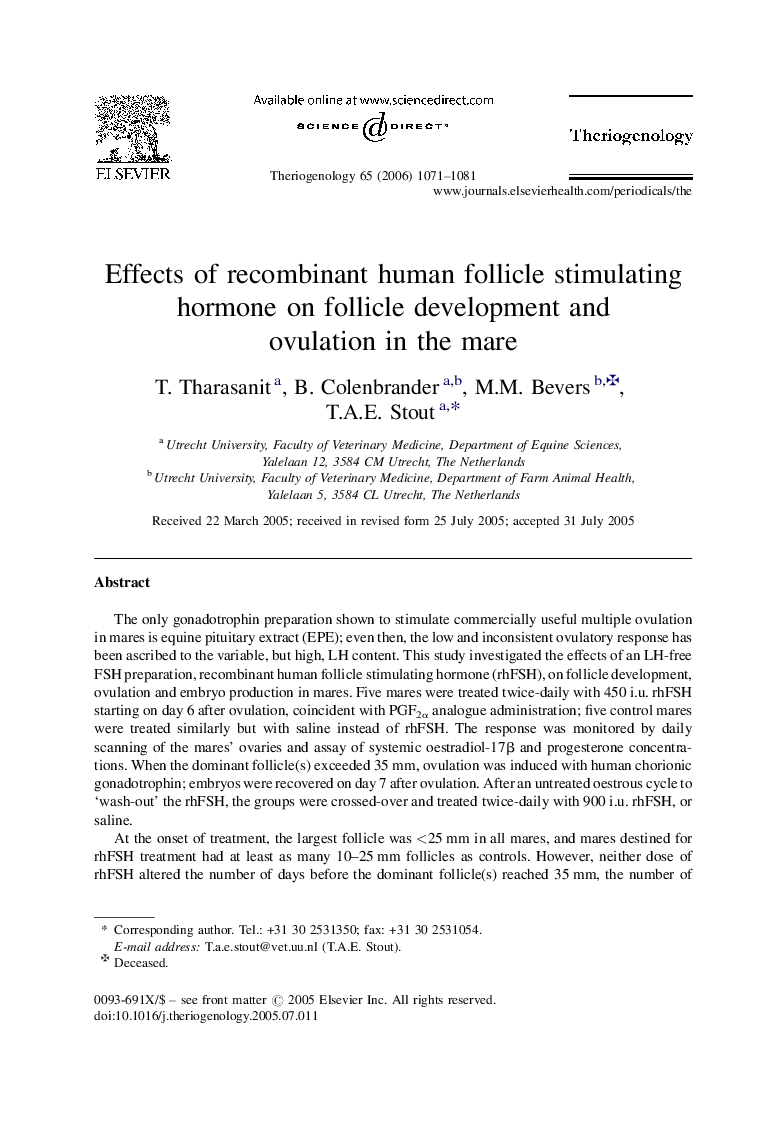| Article ID | Journal | Published Year | Pages | File Type |
|---|---|---|---|---|
| 2097187 | Theriogenology | 2006 | 11 Pages |
The only gonadotrophin preparation shown to stimulate commercially useful multiple ovulation in mares is equine pituitary extract (EPE); even then, the low and inconsistent ovulatory response has been ascribed to the variable, but high, LH content. This study investigated the effects of an LH-free FSH preparation, recombinant human follicle stimulating hormone (rhFSH), on follicle development, ovulation and embryo production in mares. Five mares were treated twice-daily with 450 i.u. rhFSH starting on day 6 after ovulation, coincident with PGF2α analogue administration; five control mares were treated similarly but with saline instead of rhFSH. The response was monitored by daily scanning of the mares’ ovaries and assay of systemic oestradiol-17β and progesterone concentrations. When the dominant follicle(s) exceeded 35 mm, ovulation was induced with human chorionic gonadotrophin; embryos were recovered on day 7 after ovulation. After an untreated oestrous cycle to ‘wash-out’ the rhFSH, the groups were crossed-over and treated twice-daily with 900 i.u. rhFSH, or saline.At the onset of treatment, the largest follicle was <25 mm in all mares, and mares destined for rhFSH treatment had at least as many 10–25 mm follicles as controls. However, neither dose of rhFSH altered the number of days before the dominant follicle(s) reached 35 mm, the number of follicles of any size class (10–25, 25–35, >35 mm) at ovulation induction, the pre- or post-ovulatory oestradiol-17β or progesterone concentrations, the number of ovulations or the embryo yield. It is concluded that rhFSH, at the doses used, is insufficient to stimulate multiple follicle development in mares.
